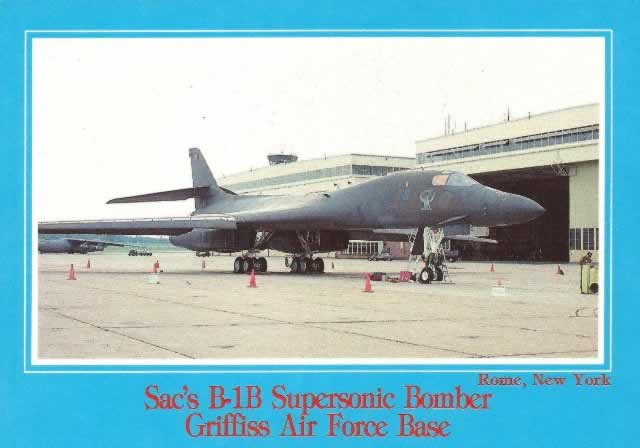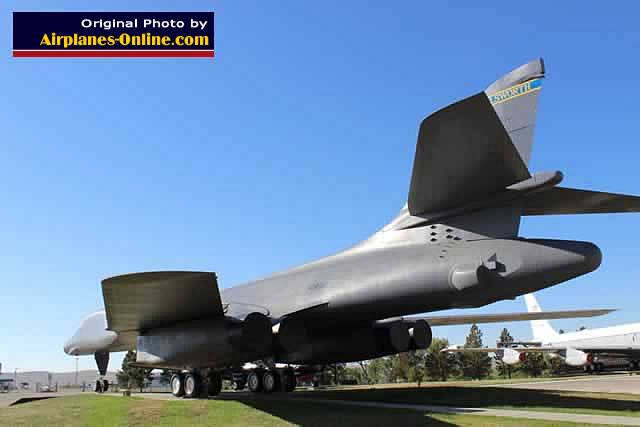Rockwell B-1B Lancer Bomber of the U.S. Air Force
The B-1 is a highly versatile, multi-mission weapon system of the United States Air Force. Carrying the largest payload of both guided and unguided weapons in the Air Force inventory, the B-1 is the backbone of America's long-range bomber force. The bomber is commonly called the "Bone" (originally from "B-One").
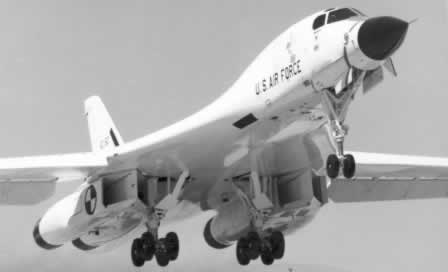 B-1A S/N 74160, the 3rd B-1 built B-1A S/N 74160, the 3rd B-1 built |
B-1A Lancer
The B-1A was initially developed in the 1970s as a replacement for the B-52 Stratofortress, and built by Rockwell International (now Boeing).
Four prototypes of this long-range, high speed (Mach 2.2) strategic bomber were developed and tested in the mid-1970s, but the program was canceled in 1977 before going into production. Flight testing continued through 1981.
B-1B Lancer
The B-1B is an improved variant initiated by the Reagan administration in 1981. The first production B-1 flew in October 1984, and the first B-1B was delivered to Dyess Air Force Base, Texas, in June 1985. Initial operational capability was achieved on October 1, 1986.
A total of 100 B-1B aircraft were built, and the final B-1B was delivered by Rockwell to the Air Force on May 2, 1988. The aircraft today are based at Ellsworth AFB in South Dakota and Dyess AFB in Texas.
The active Air Force inventory today is about 45 B-1B aircraft.
General Characteristics of the B-1B Lancer
B-1B Lancer, S/N 83-0067, left rear viewContractor: Boeing, North America (formerly Rockwell International, North American Aircraft)
Power plant: Four General Electric F101-GE-102 turbofan engines with afterburner
Thrust: 30,000-plus pounds with afterburner, per engine
Wingspan: 137 feet extended forward, 79 feet swept aft
Length: 146 feet
Height: 34 feet
Weight: approximately 190,000 pounds
Maximum Takeoff Weight: 477,000 pounds
Fuel Capacity: 265,274 pounds
Payload: 75,000 pounds
Speed: 900-plus mph (Mach 1.2 at sea level)
Range: Intercontinental
Ceiling: More than 30,000 feet
Crew: Four (aircraft commander, copilot, and two weapon systems officers)
B-1 Aircraft Survivors on Display
The 10 surviving B-1 bombers that are on display around the U.S. include those listed below. Photographs of several of the B-1B survivors are included on this page.
- B-1A - Third B-1A (AF s/n 74-0160) - Wings Over the Rockies Museum, at the former Lowry Air Force Base, Denver, Colorado.
- B-1A - Fourth and last B-1A (s/n 74-0174) - Strategic Air Command and Space Museum near Offutt AFB, Ashland, Nebraska.
- B-1B (s/n 84-0051) - National Museum of the United States Air Force, Wright-Patterson AFB, Dayton, Ohio.
- B-1B (s/n 83-0065) - Dyess Linear Air Park at Dyess Air Force Base, Texas. This was the first aircraft delivered to the Air Force, named "The Star of Abilene".
- B-1B (s/n 83-0067) - South Dakota Air and Space Museum, Ellsworth Air Force Base, South Dakota. Ellsworth AFB is home to one of the two Regular Air Force B-1B wings. (see photos below)
- B-1B (s/n 83-0068) - Reflections of Freedom Air Park, McConnell Air Force Base, Wichita, Kansas.
- B-1B (s/n 83-0069) - Museum of Aviation, Robins Air Force Base, Warner Robins, Georgia. (see photos below)
- B-1B (s/n 83-0070) - Hill Aerospace Museum, Hill Air Force Base, Ogden, Utah. (see photos below)
- B-1B (s/n 83-0071) "Spit Fire" - Charles B. Hall Airpark at the main gate of Tinker Air Force Base, Oklahoma City. (see photos below)
- B-1B ç - Global Power Museum at Barksdale AFB, Bossier City, Louisiana
B-1B Photos from the Tinker Air Force Base Air Park
B-1B Lancer
at the entrance to Tinker Air Force Base, Oklahoma City |
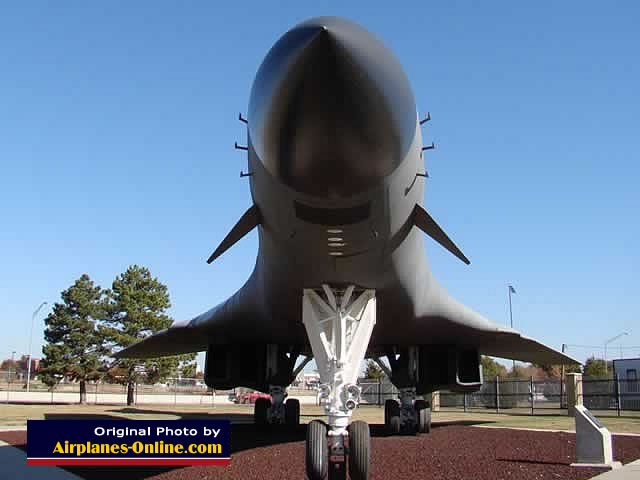 |
Rockwell B-1B Lancer
B-1B "Spitfire", S/N 83-0071, of the 28th Bomb Squadron at the Charles B. Hall Airpark at the entrance to Tinker Air Force Base, Oklahoma City, Oklahoma |
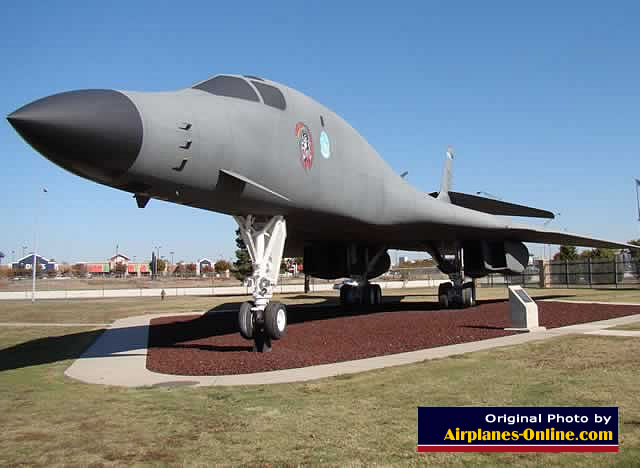 |
Rockwell B-1B Lancer
S/N 83-0071, Tail Code DY, Tinker Air Force Base, Oklahoma City |
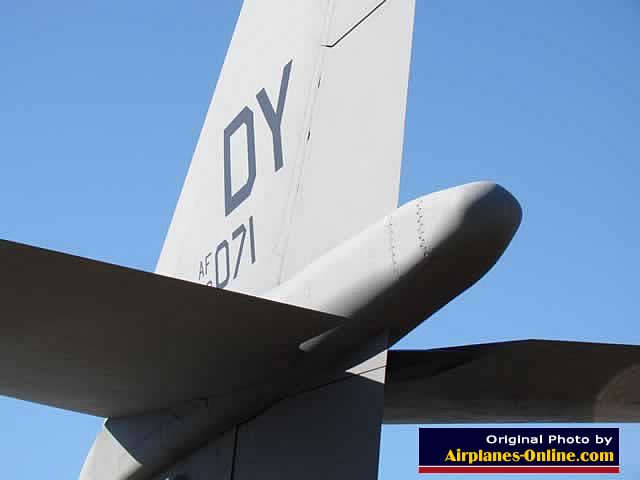 |
Rockwell B-1B Lancer
"Spitfire" at the Air Depot Boulevard gate at Tinker AFB, Oklahoma City |
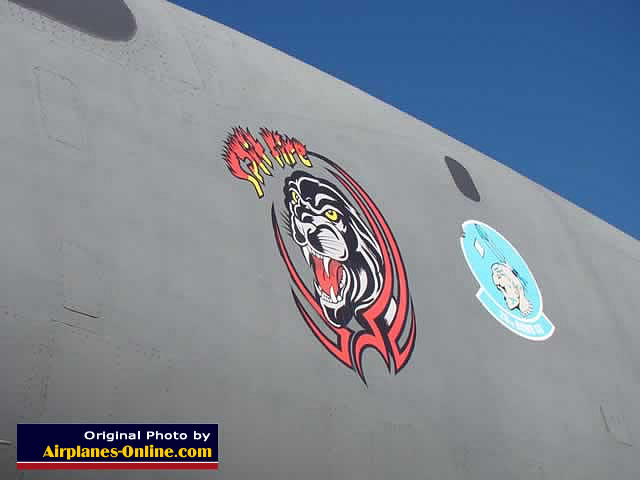 |
B-1B Photographs from the Hill Aerospace Museum
Rockwell B-1B Lancer, S/N 83-0070, Ogden, Utah |
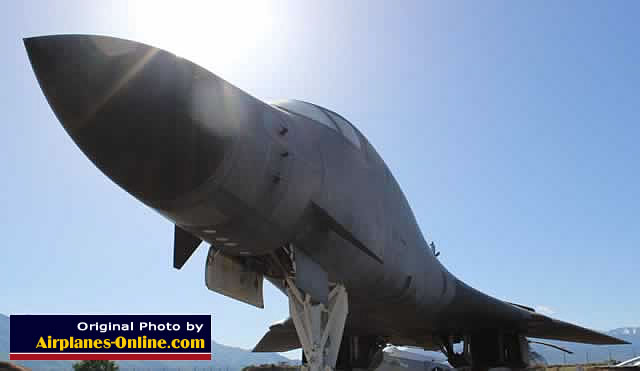 |
B-1B Lancer, S/N 83-0070, right cockpit view |
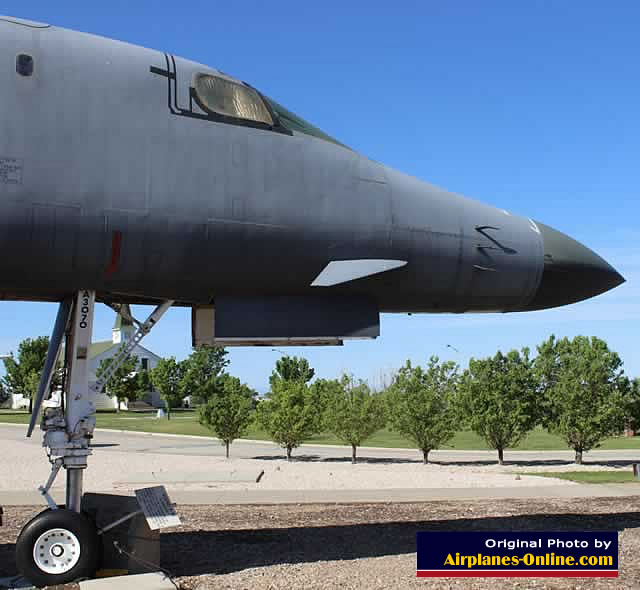 |
Rockwell B-1B Lancer, S/N 83-0070, front landing gear |
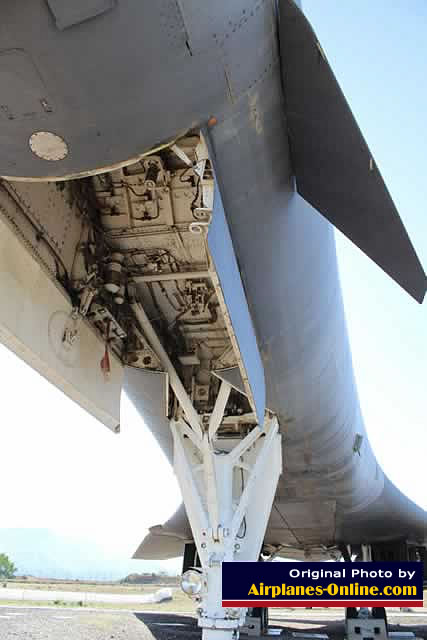 |
B-1B Photos from the Museum of Aviation at Robins AFB in Georgia
B-1B Lancer
at the Museum of Aviation at Robins AFB, in Warner-Robins, Georgia |
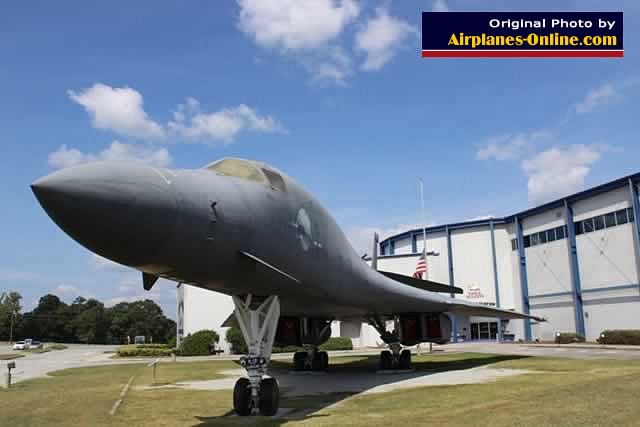 |
B-1B Lancer "Midnight Train from Georgia", 116th Bomb Wing, on display in Warner-Robins, Georgia |
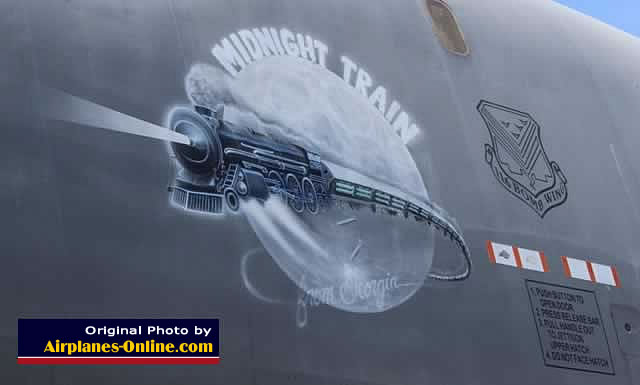 |
B-1B Lancer, Tail Code GA, at Robins AFB, in Warner-Robins, Georgia |
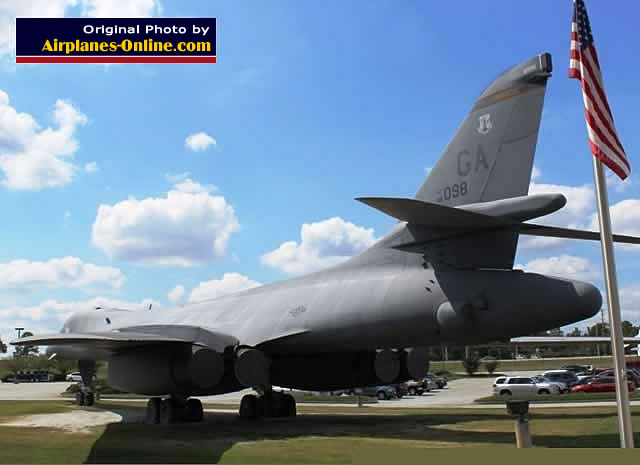 |
B-1B Lancer Photographs from the South Dakota Air and Space Museum
B-1B Lancer, S/N 83-0067, of the U.S. Air Force, South Dakota Air & Space Museum, at the gate of Ellsworth AFB |
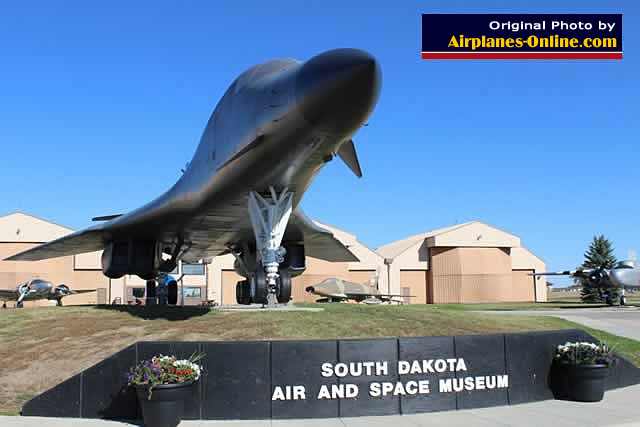 |
B-1B Lancer, S/N 83-0067, of the U.S. Air Force |
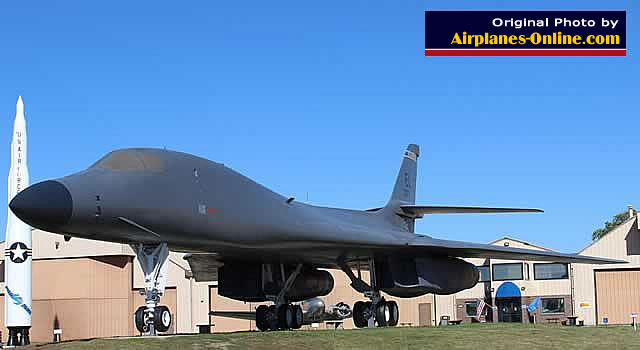 |
B-1B Lancer, S/N 83-0067, Tail Code EL, Ellsworth Air Force Base, Rapid City |
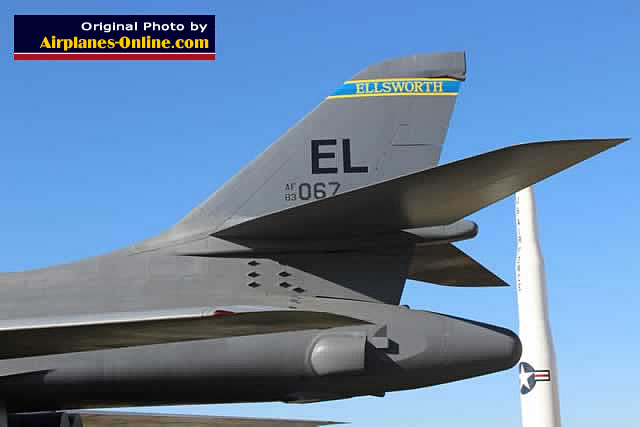 |
Undercarriage and landing gear on B-1B Lancer, S/N 83-0067, of the U.S. Air Force |
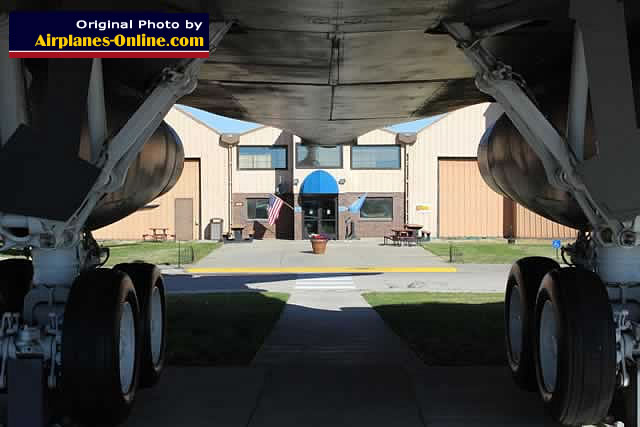 |
B-1A Photograph from the Strategic Air Command and Space Museum
Rockwell B-1A Lancer, S/N 76-174, on display at the Strategic Air Command & Aerospace Museum, Nebraska |
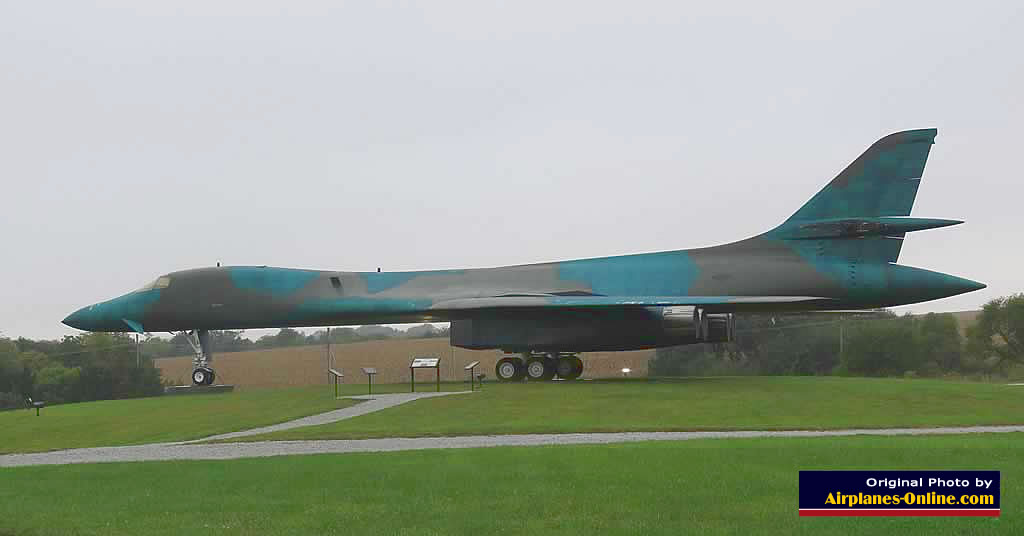 |
B-1B Photo from Davis-Monthan Air Force Base AMARG
B-1B Lancer bomber from Dyess AFB in storage at the AMARG facility at Davis-Monthan Air Force Base, Tucson, Arizona |
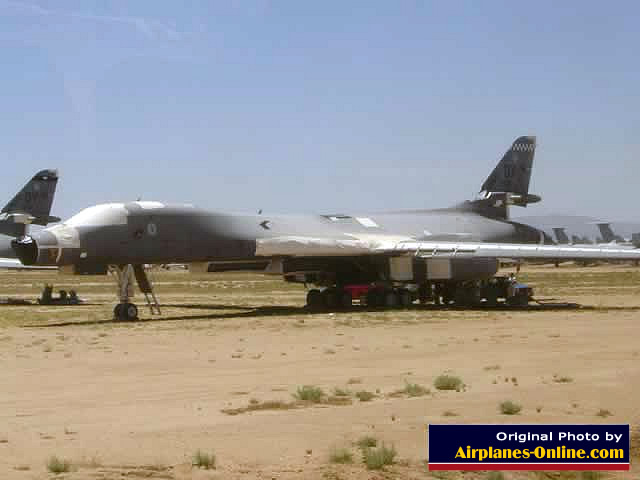 |
More B-1B Lancer Photos
B-1B Lancer, S/N 85-0080, Tail Code DY, at the Global Power Museum ... a new addition to the museum in 2022 |
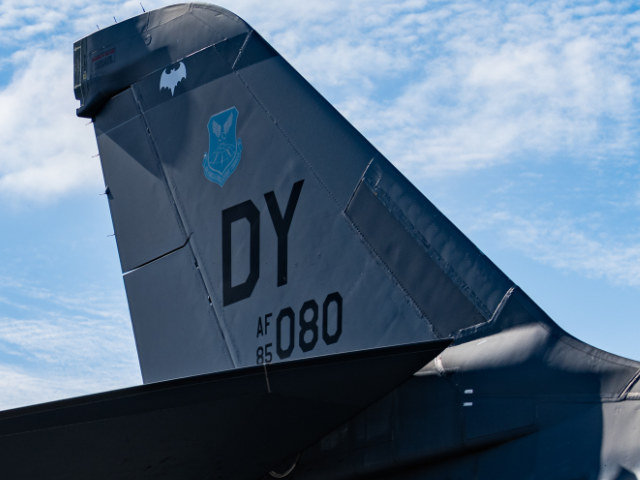 |
B-1B Lancer on display at Mountain Home Air Force Base in Idaho
(photo by Michael Hoschouer) |
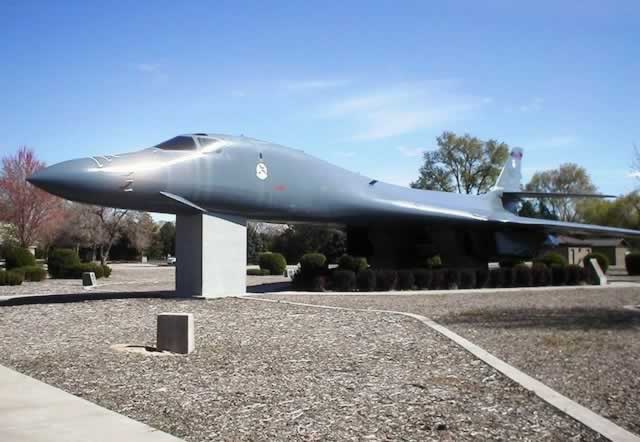 |
